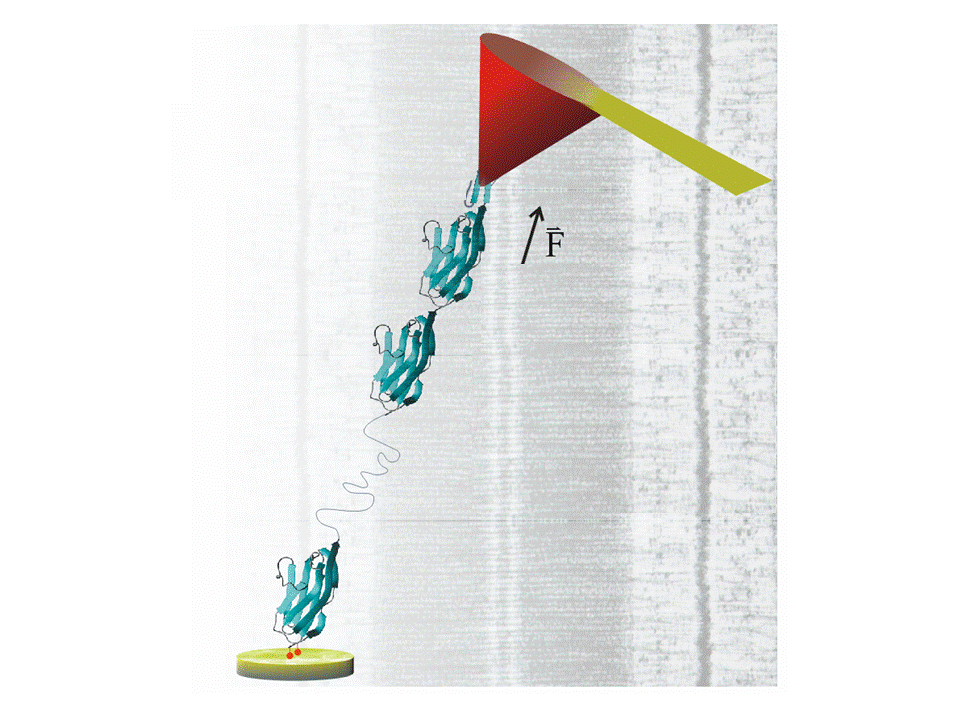Probing chemical reactions with force, one bond at a time |
The mechanism by which mechanical forces regulate the kinetics of a chemical reaction is unknown. We use single molecule force-clamp spectroscopy and protein engineering to study the effect of force on the kinetics of thiol/disulfide exchange. Reduction of disulfide bond via the thiol/disulfide exchange chemical reaction is crucial in regulating protein function and is of common occurrence in mechanically stressed proteins. While reduction is thought to proceed through a substitution nucleophilic bimolecular (SN2) reaction, the role of a mechanical force in modulating this chemical reaction is unknown. We apply a constant stretching force to single engineered disulfide bonds and measure their rate of reduction by dithiothreitol (DTT). We find that while the reduction rate is linearly dependent on the concentration of DTT, it is exponentially dependent on the applied force, increasing 10-fold over a 300 pN range. This result predicts that the disulfide bond lengthens by 0.34 Å at the transition state of the thiol/disulfide exchange reaction. In addition to DTT, we also study the reduction of the engineered disulfide bond by the E. coli enzyme thioredoxin (Trx). Thioredoxins are enzymes that catalyze disulfide bond reduction in all organisms. As before, we apply a mechanical force in the range of 25-450 pN to the engineered disulfide bond substrate and monitor the reduction of these bonds by individual enzymes. In sharp contrast with the data obtained with DTT, we now observe two alternative forms of the catalytic reaction, the first requiring a reorientation of the substrate disulfide bond, causing a shortening of the substrate polypeptide by 0.76±0.07 Å, and the second elongating the substrate disulfide bond by 0.21±0.01 Å. These results support the view that the Trx active site regulates the geometry of the participating sulfur atoms, with sub-Ångström precision, in order to achieve efficient catalysis. Single molecule atomic force microscopy (AFM) techniques can probe dynamic rearrangements within an enzyme's active site which cannot be resolved with any other current structural biological technique. Furthermore, our work at the single bond level directly demonstrates that thiol/disulfide exchange in proteins is a force-dependent chemical reaction. Our findings suggest that mechanical force plays a role in disulfide reduction in vivo, a property which has never been explored by traditional biochemistry. Arun P. Wiita 1,2, Raul Perez-Jimenez 1, Kirstin A. Walther 1,3, Frauke Gräter 4, Sri Rama Koti Ainavarapu 1, Bruce J. Berne 4, Jose M. Sanchez-Ruiz 5, and Julio M. Fernandez 1
1 Department of Biological Sciences, 2 Graduate Program in Neurobiology and Behavior, 3 Department of Physics and 4 Department of Chemistry, Columbia University, New York, NY 10027, USA. 5 Facultad de Ciencias, Departamento de Quimica Fisica, Universidad de Granada, 18071, Granada, Spain.
|
 |